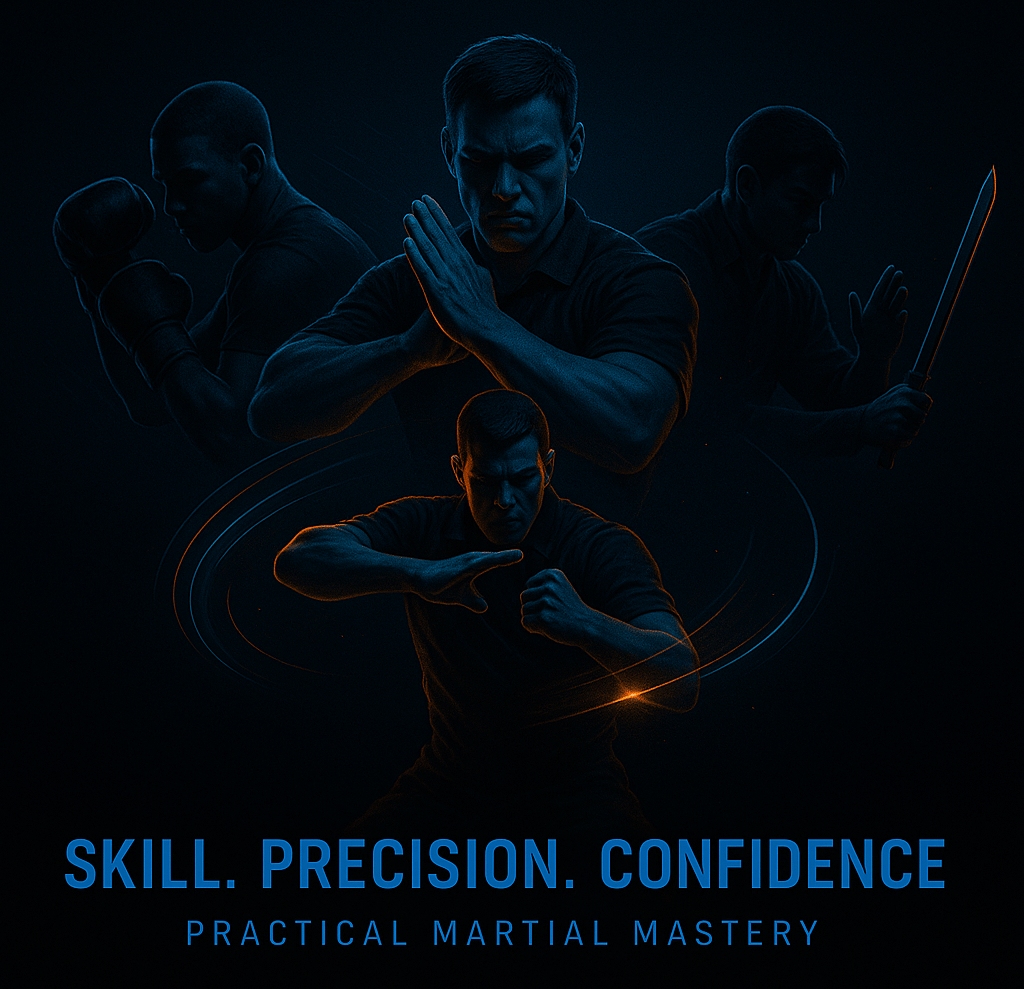No man drifts upward
Martial Arts & Defensive Skills for Personal Protection Part II of III
Discover the assertive force method that combines martial arts and practical defensive skills to enhance your personal protection. Learn the importance of situational awareness and disciplined training to be strategically ready for any confrontation.
Randy Miller
5/17/2025


Part II – Martial Arts and Practical Defensive Skills
“Strength Through Strategic Skill.”
While situational awareness provides the first essential layer of personal protection, the possibility of physical confrontation requires tangible, reliable skills. The Assertive Force Method advocates preparedness through disciplined training in practical martial arts and realistic defensive techniques. Here, the principle remains clear:
Expect nothing, but be strategically ready for anything.
Selecting the Right Martial Arts
The primary objective of training is realistic effectiveness. Not every martial art is equally practical in actual combat scenarios. Certain disciplines excel at rapidly imparting usable skills suited to real-world defense:
1. Krav Maga
Strengths:
Aggressive, reality-based training designed explicitly for street scenarios and real-world threats. It emphasizes decisive action, rapid incapacitation of threats, and escape.
Best Suited For:
Gentlemen seeking rapid proficiency, particularly effective against armed or multiple attackers.
2. Wing Chun
Strengths:
Exceptional close-range combat efficiency, speed, and intuitive reflex development. Excellent for confined spaces where quick, decisive movements matter most.
Best Suited For:
Gentlemen looking for refined, precise techniques suitable for situations involving sudden aggression or confined environments.
3. Boxing
Strengths:
Unmatched striking effectiveness, defensive footwork, conditioning, and simplicity. Boxing instills reliable striking skills quickly, fostering confidence and physical fitness.
Best Suited For:
Gentlemen who value immediate, practical combat effectiveness and physical conditioning as an integral part of their protective strategy.
Weapon-based Skills: Filipino Martial Arts (FMA)
Beyond unarmed martial arts, Filipino Martial Arts offer practical expertise with knives, sticks, and improvised weapons—an essential component of a layered self-defense strategy.
Advantages of Filipino Martial Arts:
Versatile Training:
Rapid, practical applications of everyday items—pens, keys, umbrellas, canes, or sticks.
Realistic Weapon Handling:
Includes both defensive (disarming) and offensive capabilities, making it ideal for situations where edged or blunt weapons are a threat.
Situational Flexibility:
Equips practitioners to defend effectively even when unarmed against armed attackers, enhancing adaptability under diverse threat scenarios.
Firearms Proficiency as Ultimate Equalizer
While martial arts provide critical unarmed and weapon-based skill, firearms training offers an unparalleled defensive equalizer. Firearms proficiency, responsibly learned and maintained, significantly enhances a gentleman’s protective capability in severe threat scenarios.
Recommended Firearms Training Progression:
Basic Level:
Safe firearm handling, range discipline, accuracy fundamentals (available at local shooting ranges or clubs).
Intermediate Level:
Defensive shooting techniques, movement, reloading under pressure, and scenario-based private training.
Advanced Level:
Tactical response training, stress-induced scenarios, and frequent proficiency refreshers. This level ensures skills remain sharp under real-world pressures.
Stacking Skills for Maximum Effectiveness
The Assertive Force Method advocates “stacking” these skills—combining multiple disciplines into a layered defense strategy. A comprehensive defensive stack provides versatile and resilient capability:
Recommended Skill Stack Example:
Core Foundation: Situational Awareness
Immediate Defense: Krav Maga or Boxing
Close-Quarters Efficiency: Wing Chun
Weapon Skills: Filipino Martial Arts (Knives/Sticks)
Last-Line Defense: Firearms proficiency
Each skill layer reinforces the others, creating a comprehensive protection system resilient against a broad spectrum of threats.
Maintaining Skills and Practical Drills
Skills degrade without regular practice. Gentlemen should adopt ongoing personal training regimens:
Monthly Refreshers:
Schedule one monthly session practicing primary skills and drills.
Quarterly Professional Training:
Engage professional instructors quarterly to reassess proficiency, correct technique, and reinforce realistic scenarios.
Scenario-Based Drills:
Regularly visualize or simulate realistic scenarios, ensuring readiness remains deeply embedded in subconscious reflexes.
Integrating Personal Protection into Daily Fitness
Self-defense training dovetails seamlessly with physical fitness routines, aligning strategic preparedness with physical mastery. Incorporating defensive martial arts into VoidBreaker Protocol or similar Assertive Force fitness routines offers dual benefits of conditioning and practical defensive readiness.
Summary of Part II
Practical martial arts provide essential defensive capabilities.
Filipino Martial Arts complement unarmed skills with realistic weapons training.
Firearms proficiency represents a critical skill for severe threats.
Stacked skills create layered, comprehensive defensive capabilities.
Regular maintenance training ensures skill effectiveness.
End of Part II.
Mindset
Wealth
Legacy
© 2025, All rights reserved upon all original content presented by Randy Miller. Re-use of content within context and link to website is noted within re-use is hereby granted.
